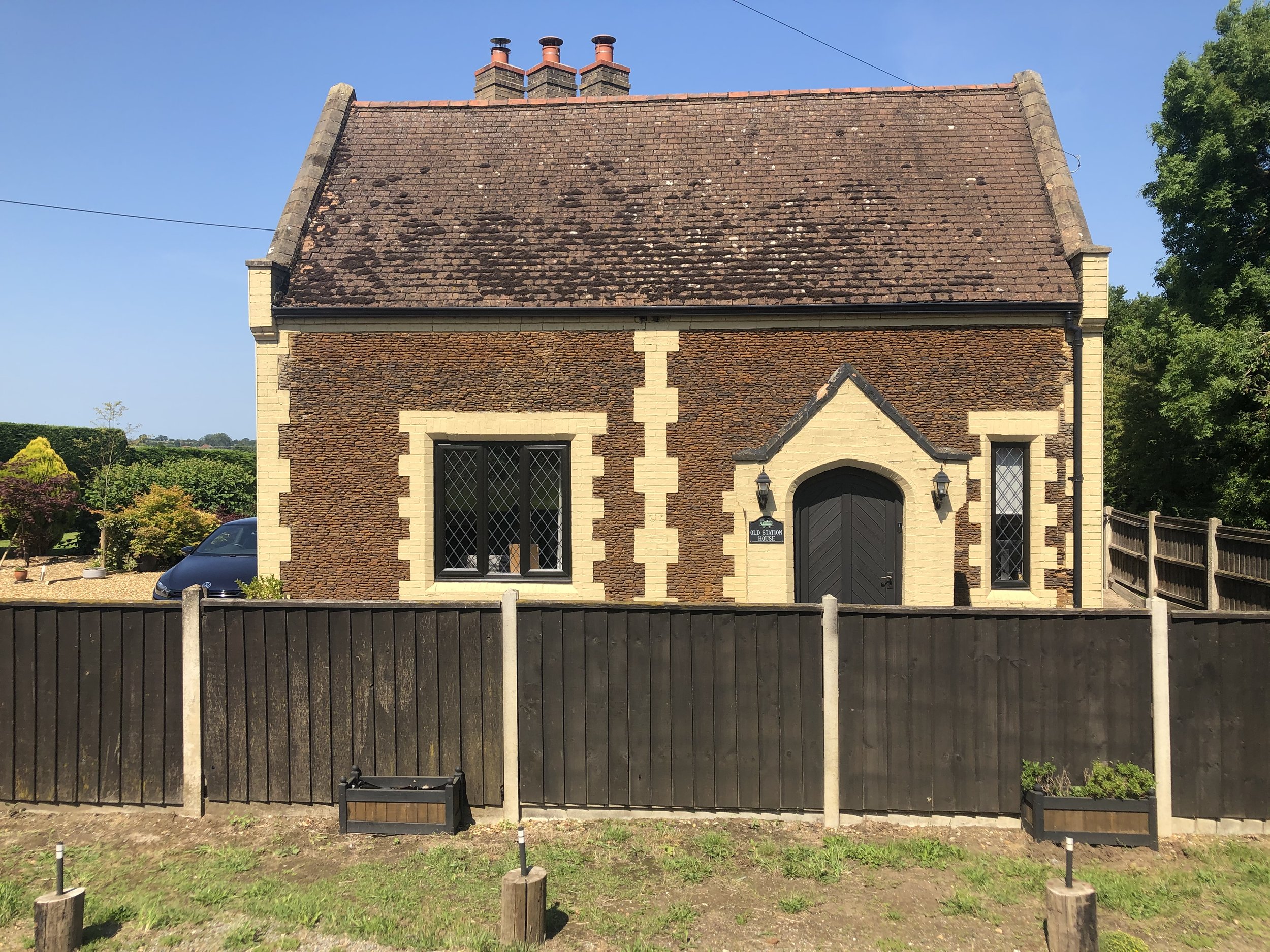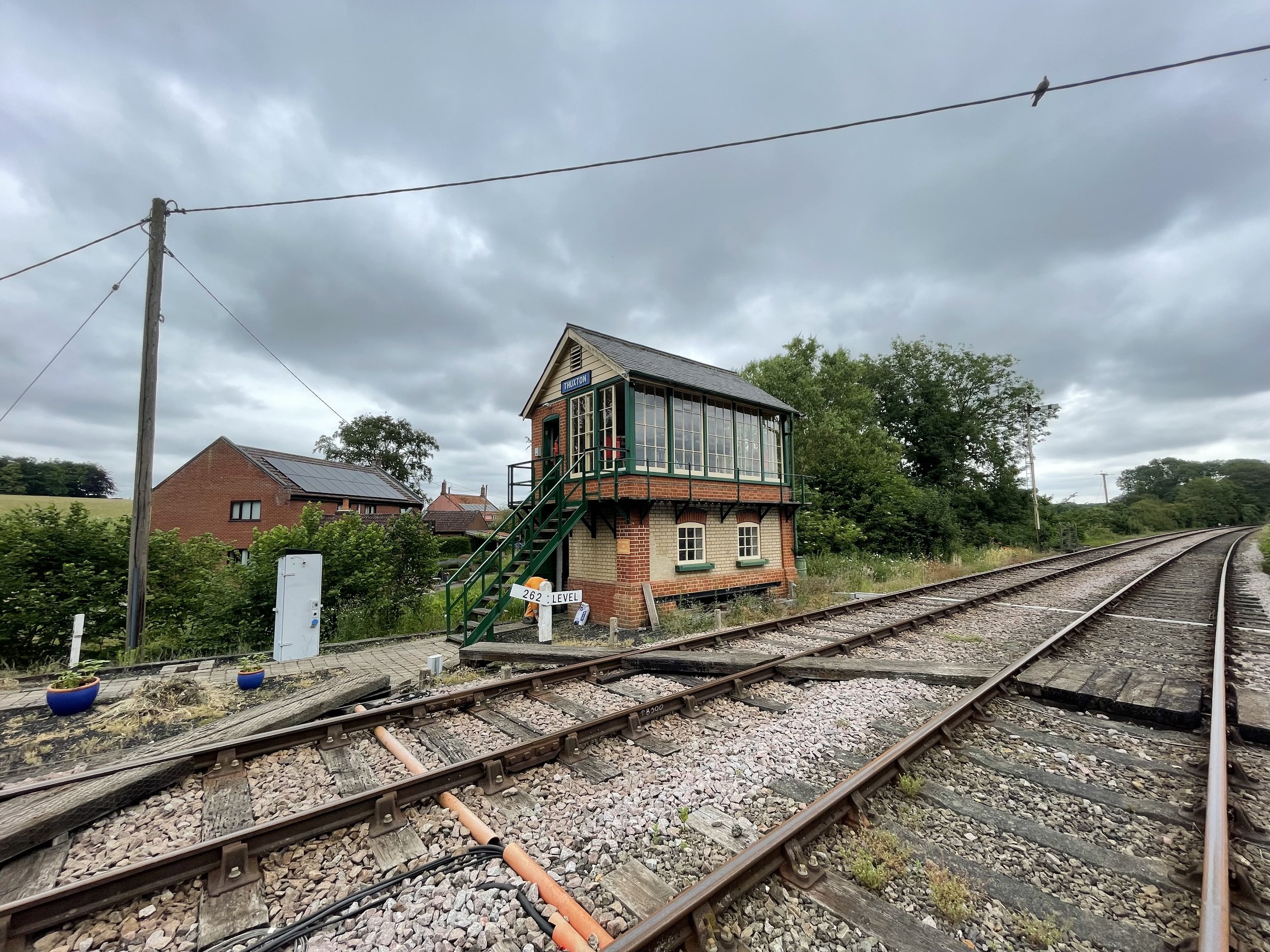EAST WINCH TO NARBOROUGH & PENTNEY
1846-1968

To navigate through the route, kindly make use of the navigational icons located below that correspond to each part of the route.
East Winch Station
Located 5 miles and 15 chains away from King's Lynn and precisely two miles from Middleton towers, East Winch station was situated approximately half a mile away from the village. The station was also in close proximity to Gayton Road station from the M&GN South Lynn to Fakenham and Melton Constable line, which carried traffic from East Winch and neighbouring villages like Gayton. It had two platforms and a passing loop, with two short dead-end sidings on the upside. During its early days, a signal box was built here between the goods yard and the passenger platform. The station masters were William Smith, William Fisk, Edward Jackson, Thomas Hurley, Mr L Raney, Mr F Constable, William Dines, and George Taylor, with the latter serving in the last days. East Winch was one of five intermediate stations on the Lynn & Dereham, which, soon after opening, became a request stop until 1882. In the 1950s, the up platform was shortened, and steam services in 1955 were replaced with DMUs, with the service increasing to twelve services a day calling at East Winch. However, there were no Sunday trains between Dereham and Lynn.
In March 1963, Dr Richard Beeching's report, "The Reshaping of Britain's Railways," was published, leading to the closure of freight services at intermediate stations. In 1964, East Winch closed to Goods, and in 1966, it became an unstaffed halt with the signal box, two platforms, and the passing loop kept open. East Winch, along with all other stations, closed on Saturday, September 7, as there were no Sunday services. Shortly after, the track after Middleton Towers was ripped up.
Even today, East Winch Station remains as a residential home with one platform still in place. The Signal box has been relocated to the Mid Norfolk railway at Thuxton and has been beautifully restored to a high standard. Unfortunately, a grain shed caught fire in 2016 and was subsequently demolished.
East Winch station Layout
Dated 1892-1914
Thanks to the national library of Scotland.
Google Maps position of East Winch Station.
East Winch Station
East Winch Station in 2020
East Winch station Year Unknown
Credit KL Forums
East Winch Signal box
It is believed that East Winch signal box was built after the station's construction in the 1800s, when a passing loop and second platform were added. Unfortunately, after the railway line was shut down, the signal box was vandalised. Fortunately, the Mid Norfolk Railway saved the part of the structure and it is now utilised along the Mid Norfolk Heritage Railway at Thuxton station.
Ben Brooksbank / Derelict signalbox at former East Winch station, 1995 / CC BY-SA 2.0
Robert Walden, CC BY-SA 2.0 <https://creativecommons.org/licenses/by-sa/2.0>, via Wikimedia Commons
East Winch Signal Box at Thuxton on the Mid Norfolk Railway
Parts of the East Winch box were used to build the signal box at Mid Norfolk Railway at Thuxton. It was designed after the signal box at Shippea Hill on the Breckland line. More information is available below.
East Winch Goods Yard
The Goods Yard at East Winch was Constructed on the upside of the Platform after the station had originally opened, and in 2016 a grain shed was destroyed by fire.
Leaving East Winch for Bilney
The train departed from East Winch and proceeded towards its next stop, the now defunct Bilney station that ceased operations during the Victorian era. During the journey, the train crossed over a level crossing, which the cottage still exists to this day. It then passed under a farm crossing bridge and over an isolated crossing that later became the A47 bypass, before arriving at the short-lived Bilney station.
The Crossing Cottage Photographed in 2020
Bilney Station.
The station known as Bilney was only operational for a brief period of time along the Lynn Dreham line, opening in 1846 and closing just two decades later in 1866. Despite its short-lived nature, Bilney remains in existence to this day, although one would never be able to tell while passing by on the A47. The house that served as the station is still standing and currently serves as a residential property, having undergone several expansions over the years.
The platforms no longer exist and the railway would have extended to the north side of the building. At the time the line was operational, there were manual crossing gates over the main road, now known as A47.
During its brief existence, this station could have been known as Bilney & Pentney as well.
Bilney Station Position
Dated 1892-1914
Thanks to the national library of Scotland.
Bilney Station position via Google Maps
From afar, one can spot the point where the now-defunct Bilney station would have been situated. The station operated for a mere two decades, beginning from October 27th, 1846, and ending on August 1st, 1866. Fortunately, the station building still stands and has been repurposed as a private dwelling. The adjacent thoroughfare visible in the distance is the A47, constructed in 1981, long after the railway and the station had ceased operations, spanning a gap of 135 years.
As we left Bilney, the Line led us towards Narborough and Pentney. We traversed mostly wooded areas, passing over farm tracks, then through what is now an industrial unit, and finally over a level crossing at Pentney Lane, where the Crossing Cottage still stands.
Where the railway would have crossed Pentney Lane before shortly arriving at Narborough & Pentney station
Finally, we arrived at the next station, Narborough and Pentney.
















